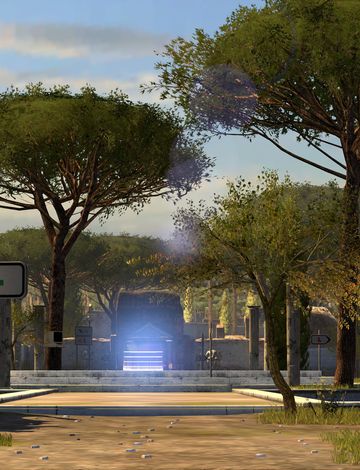Before diving into my detailed thoughts on The Talos Principle, here’s a bit of context: when I first heard about Croteam’s latest philosophical puzzle epic, I was immediately intrigued by its reputation for mind-bending challenges and thought-provoking narrative. In this review, I’ll share my impressions on how it compares to other genre classics, break down its mechanics and story, and touch upon what makes it stand out—even as it occasionally tests your patience.
I approached The Talos Principle with high expectations. Notably, Croteam’s puzzle epic shines in philosophy and design. Tom Jubert and Jonas Kyratzes crafted a world that challenges the mind.
Overall Impressions
From the first test chamber, I felt both awe and respect. Indeed, the puzzles stand among the genre’s best. They require clever manipulation of limited tools. Moreover, most puzzles deliver satisfying “aha” moments. A few later challenges felt overly intricate. That said, the world’s lore kept me going. I compare this title favorably to Portal and The Witness. In fact, The Talos Principle offers deeper narrative hooks. Ultimately, it sets a new bar for thoughtful puzzle games.
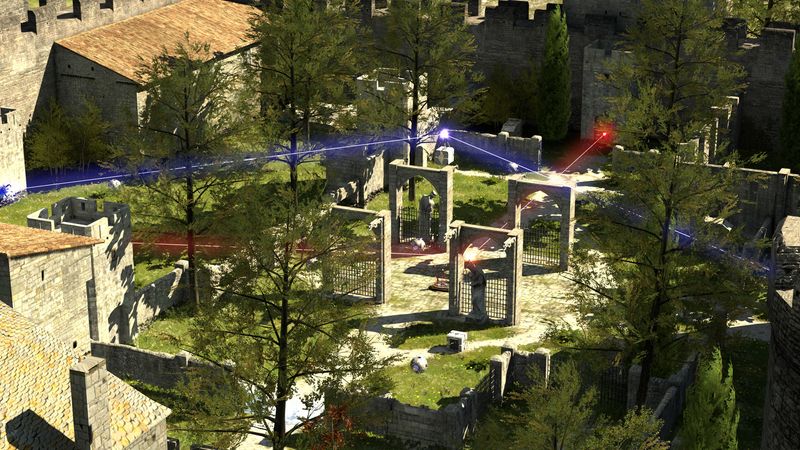
Gameplay Mechanics
I navigated with fluid movement and precise aim. Additionally, the toolbox includes jammers, connectors, and fans. Each tool obeys strict physical rules. For instance, I loved using a single connector to reroute laser beams. At times, I felt boxed in by puzzle constraints. However, creative players can break “rules” within intended limits. One standout moment saw me stack movable cubes to scale a barrier, and that felt brilliant. Controls remain responsive throughout. In particular, camera rotations feel natural. Some late-game puzzles demand extreme patience. Throughout it all, the design always encourages fresh thinking over brute force.
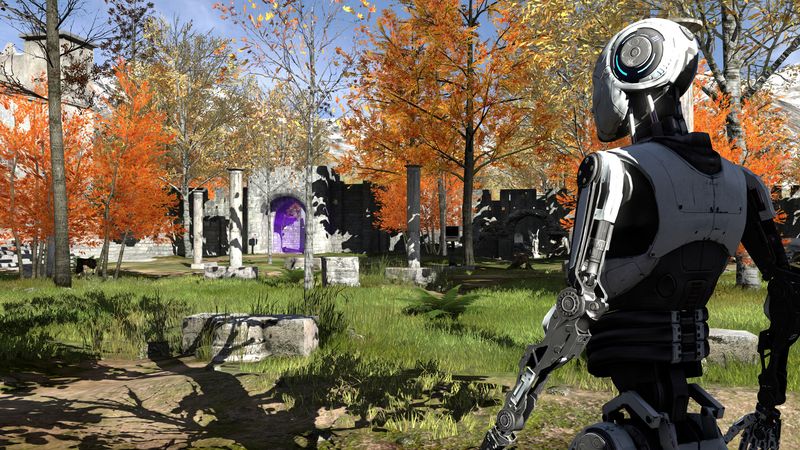
Story and Characters
I rarely rave about narrative in puzzle games, but The Talos Principle changed that. You awaken as an android guided by a disembodied voice named Elohim. As you gather sigils to prove your worth, you uncover philosophical texts by ancient thinkers. These texts spark deep questions on consciousness and free will. I paused to read every terminal entry, since the game never rushes you through revelation. Minor flaws appear when UE voices feel distant. Still, the philosophical underpinnings stay with me long after I saved my final sigil.
Visuals and Graphics
The Talos Principle uses Serious Engine 4 from Croteam. Consequently, it shines here in a serene ancient-ruins aesthetic. Lush vegetation spills through marble columns, and high-resolution textures capture every crack and vine. Dynamic lighting bathes me in warm sunlight while shadows shift as I move through corridors. Admittedly, occasional texture pop-ins reminded me of the 2014 release, but these moments prove rare and brief. Overall, the art direction feels timeless and inspiring.

Sound and Music
Composer Damjan Mravunac’s score perfectly matches the tone. As ambient tracks weave into puzzle sequences, subtle percussion rises as tension heightens. I never needed to mute or skip any track. Likewise, sound effects provide crisp feedback—the hum of a powered jammer feels weighty and real. Furthermore, voice acting for Elohim strikes an authoritative yet gentle tone. A single line about humanity’s legacy sent chills down my spine. In short, audio quality never broke my immersion.
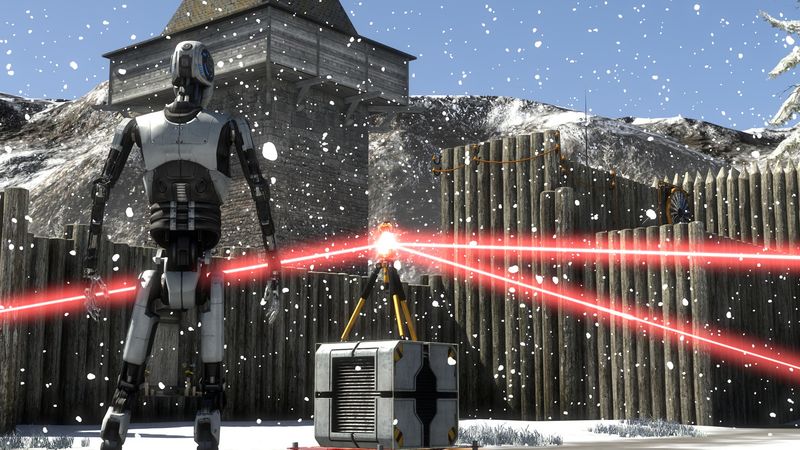
Difficulty and Replayability
Initial puzzles feel welcoming yet surprising. By chapter three, however, the challenge spikes significantly. I faced hours of trial and error on certain grids. Hardcore gamers will relish the soaring difficulty curve. Thankfully, a built-in hint system offers minimal guidance, which preserves my sense of achievement. I discovered hidden star chambers that tested endless creativity—these optional challenges extend the playtime substantially. Achieving full completion took me over a dozen hours. In the end, the replay value remains high for completionists, and I would revisit specific puzzles to refine my solutions.
Behind-the-Scenes Trivia
Croteam originally built the engine for first-person shooters like Serious Sam. Interestingly, the team repurposed it to handle complex physics puzzles. Tom Jubert and Jonas Kyratzes joined mid-development to weave in philosophical themes. Devolver Digital stepped in as publisher in early 2014. Moreover, a final update last year added VR support and new game modes, which keep The Talos Principle fresh for modern audiences.
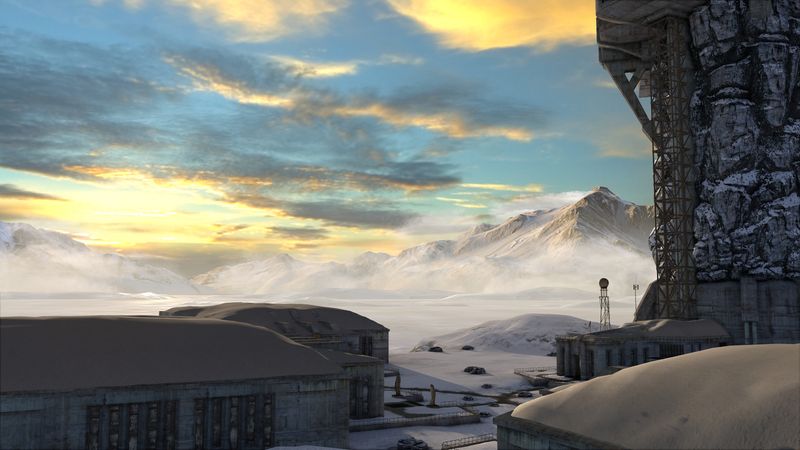
Conclusion
The Talos Principle stands as a milestone in puzzle gaming. It combines rigorous challenge with enriching narrative depth. The game occasionally tests your patience. Yet the payoff remains unforgettable. I recommend it to any gamer seeking intellectual engagement.
Rating: 4 out of 5 stars

Final Thoughts
With deep, thought-provoking puzzles and a compelling narrative that keeps players invested from start to finish, this game delivers an unforgettable experience. Stunning visuals draw you into its richly detailed world, while exceptional audio—from a haunting score to crystal-clear sound effects—brings every moment to life. Moreover, the intuitive level design ensures a smooth progression, encouraging exploration without feeling overwhelming. In addition to these standout features, frequent updates and community-driven improvements keep the experience fresh and engaging, appealing to both newcomers and veteran players alike.
Although occasional difficulty spikes may challenge even seasoned players and the rare texture pop-in briefly breaks immersion, these minor drawbacks are quickly overshadowed by the game’s overall excellence. Whether you’re a puzzle enthusiast seeking a rich, story-driven adventure or an audiovisual aficionado craving stunning art and sound design, this title stands out for its perfect blend of challenge, narrative depth, and sensory immersion.

